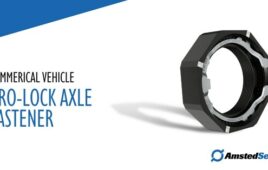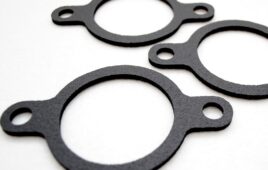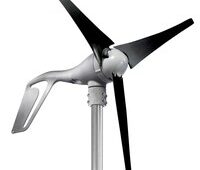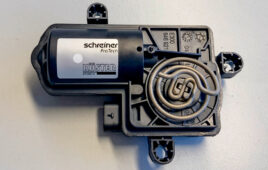For as long as radar and weapons targeting systems have been used in air, land and sea defense applications, design engineers have used “pods” as a means to protect them. But until recently, sealing these pods meant accepting some tough performance sacrifices.
Alternately known as “gimbals” or “turrets,” pods have become common features on modern military equipment. Covering up sophisticated electronic gear used for monitoring, surveillance and other purposes, they are often required to accommodate a range of motion, and their movements are usually controlled by small motors designed to meet strict weight and power specifications. Whether designed to move or remain stationary, these pods typically use one or more seals to protect their contents from environmental conditions including moisture, pressures, high and low temperatures, dust and debris.

The pod seal, which is installed between two moving or static mating surfaces, must maintain sufficient surface contact to keep internal components clean and dry. But if the seal configuration creates too much friction, gimbal movement can be restricted, and motor performance and system life may be compromised.
Over the years, the challenge of maintaining the balance between sealing effectiveness and low friction has inspired more than a few seal manufacturers to develop a solution. At an aerospace industry trade event in late 2010, Bal Seal Engineering unveiled the Bal Seal® spring-energized low friction seal.
The seal’s physical and mechanical properties make it suitable for use in rotating pods, gimbals and other types of housings where it can protect delicate internal components against environmental conditions and contaminants without restricting movement or compromising motor life.
The seal’s jacket is constructed of SP83-HT, a polymer-filled polytetrafluoroethylene (PTFE) material formulated to provide efficient sealing performance and an extremely low dynamic coefficient of friction. The seal is “energized” by a Canted Coil Spring™ (also offered as a standalone connecting, conducting and EMI/RFI shielding and/or grounding solution), which exerts a near-constant force to promote uniform wear and ensure longer service life.
The seal performs its function with minimal friction at low speeds, in moderate temperatures (-40° F to +160° F), and in dry or moist environments. It offers low abrasion to mating parts, can seal against a variety of materials, hardnesses and finishes, and can be engineered to meet a range of media and pressure requirements. Its design helps minimize countersurface wear.
According to Hugh Cook, vice president of Engineering, Bal Seal, the most important aspect of the seal – and others like it – is the “friction factor.” “When you’re able to combine materials to achieve such high lubricity, then couple that with a geometry that dramatically reduces the amount of torque necessary to move a pod without giving up sealability, you can begin to positively affect things like system weight and performance. You can improve the design, eliminate ‘stiction’ force, and any resulting jitter during target tracking, for instance.”
Traditionally, pods have been incorporated into the design of many naval vessels and manned military aircraft, including helicopters such as the SH-60 Seahawk. While that’s not expected to change, the proliferation of next-generation unmanned vehicles for land, air and sea is likely to drive the need for advanced, low-friction pod sealing technology to protect, and increase the performance of, the critical systems inside.
Bal Seal Engineering, Inc.
www.balseal.com
::Design World::





Tell Us What You Think!